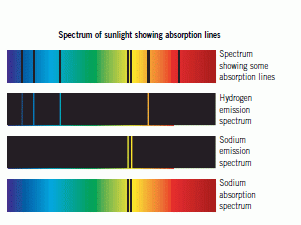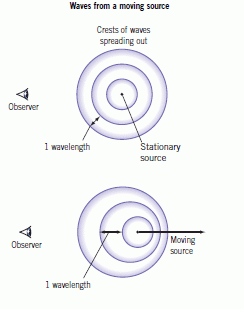Galaxies and Red-Shift
Galaxies
Our Sun is a star in the Milky Way galaxy. To see the Milky Way from Earth (it looks like a milky strip of stars in the sky) you need to be far away from the light pollution of towns and cities.
Galaxies are collections of thousands of millions of stars. There are thousands of millions of galaxies in the Universe. All the galaxies are moving away from us, and from each other.
This video explains about Galaxies using the Hubble telescope
How Science Works
The scientific community shares ideas in meetings called conferences and in published journals. They evaluate each other’s work. This process is called peer review.
In 1920 scientists had questions about our galaxy and the Universe:
- What were spiral nebulae?
- Was our galaxy, the Milky Way, the only galaxy?
- How big was the Milky Way galaxy?
Two scientists held a Great Debate.
Harlow Shapley argued that the Milky Way was the only galaxy. He thought spiral nebulae were gas clouds. Heber Curtis argued that spiral nebulae were other galaxies at great distances away from the Milky Way.
Evidence
There was not enough evidence to prove who was right. At the time most scientists thought that Shapley made a better case.
In 1924 Edwin Hubble used a new telescope and a new method of measuring distances. This new evidence showed that the distances to spiral nebulae were much greater than the size of the Milky Way.
He published his results and they were evaluated and reproduced by other scientists. Distances to more spiral nebulae were measured. They were outside the Milky Way. The scientific community accepted Curtis was right.
New Explanations
When new data disagrees with an accepted explanation, scientists do not immediately give up their accepted explanation. They wait until they have an explanation that fits the data better before they give up the accepted explanation.
Absorption Spectra
Spectral lines are lines in the spectrum of radiation from a hot object like a star.
Dark lines are wavelengths that have been absorbed by the atoms of gases the radiation has passed through, usually in the outer, cooler parts of the stars. Bright lines are wavelengths emitted by atoms of hot gases.
Each element has a different set of spectral lines, so the lines can be used to identify the elements present in the stars. The absorption spectrum has been described as a ‘fingerprint’ of the element.
Red-shift
For visible light, red has the longest wavelength and violet the shortest. If the wavelength is longer than expected this is called a red-shift.
If a source of waves is moving away the wavelength appears longer.
A red-shift in the light from a star shows that the distance between us and the star is increasing. The bigger the red-shift the faster the star is moving away.

Hubble discovered:
- The light from all the distant galaxies is redshifted – so they are all moving away from us.
- The further away the galaxy, the bigger the red-shift, so the faster the galaxy is moving away.

The change in wavelength, because a source of waves is travelling towards or away from an observer, is called the Doppler Effect.
When the wavelength increases the frequency decreases. This is why a siren drops in frequency as it travels away and increases in frequency as it approaches.
Light from stars and galaxies is red-shifted or blue-shifted depending on whether they are moving towards us or away from us. The shift moves all the dark spectral lines by the same amount.
This video explains about Red Shift
